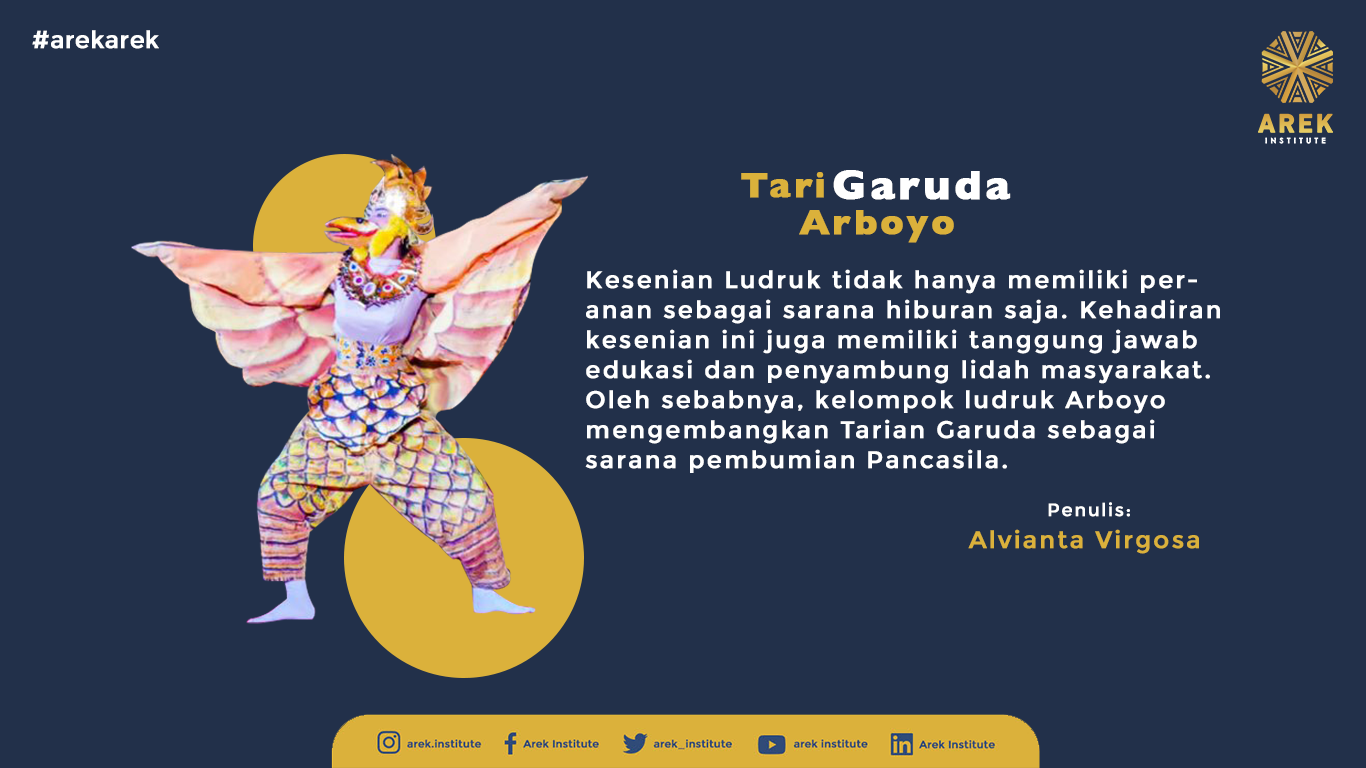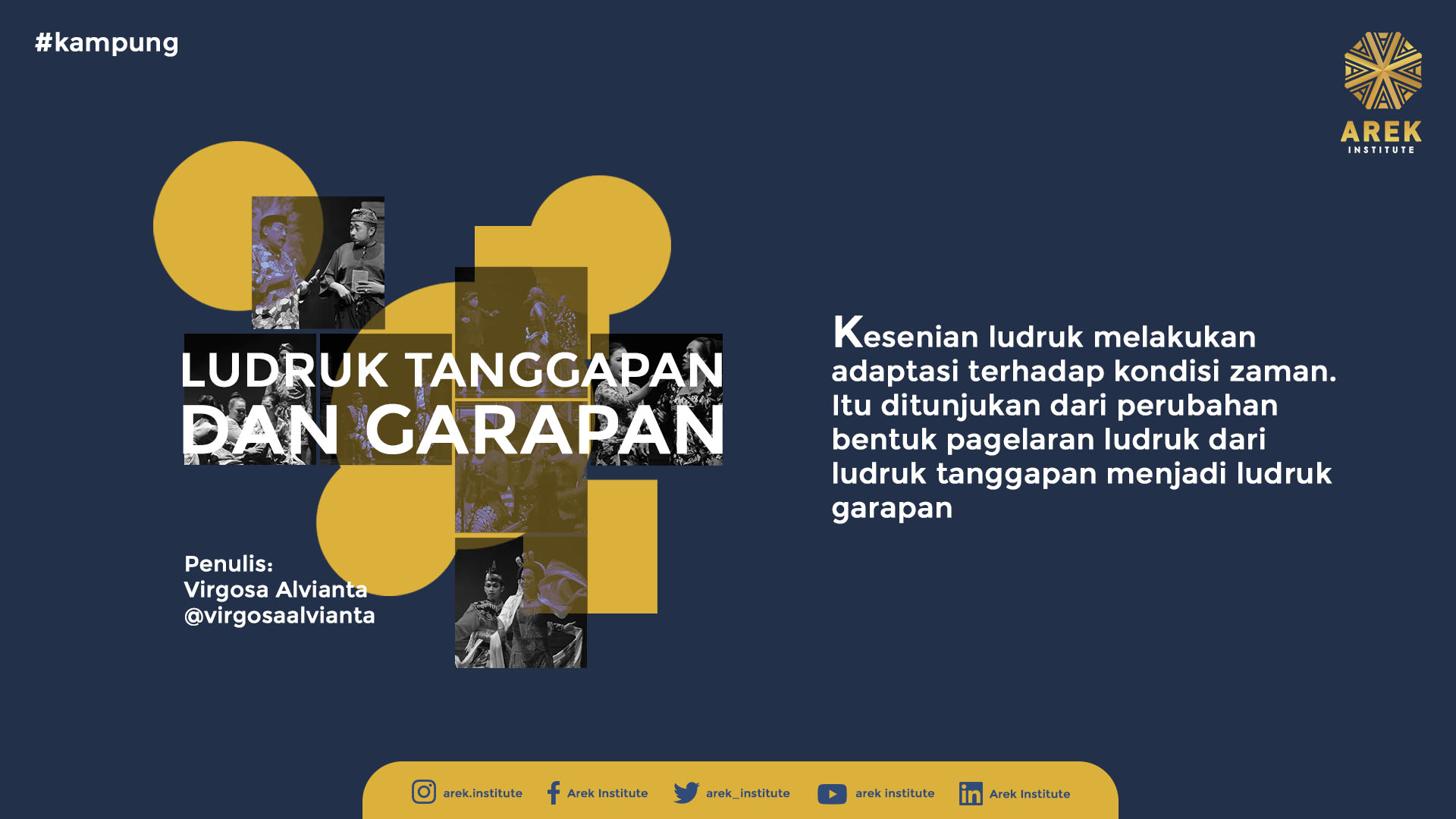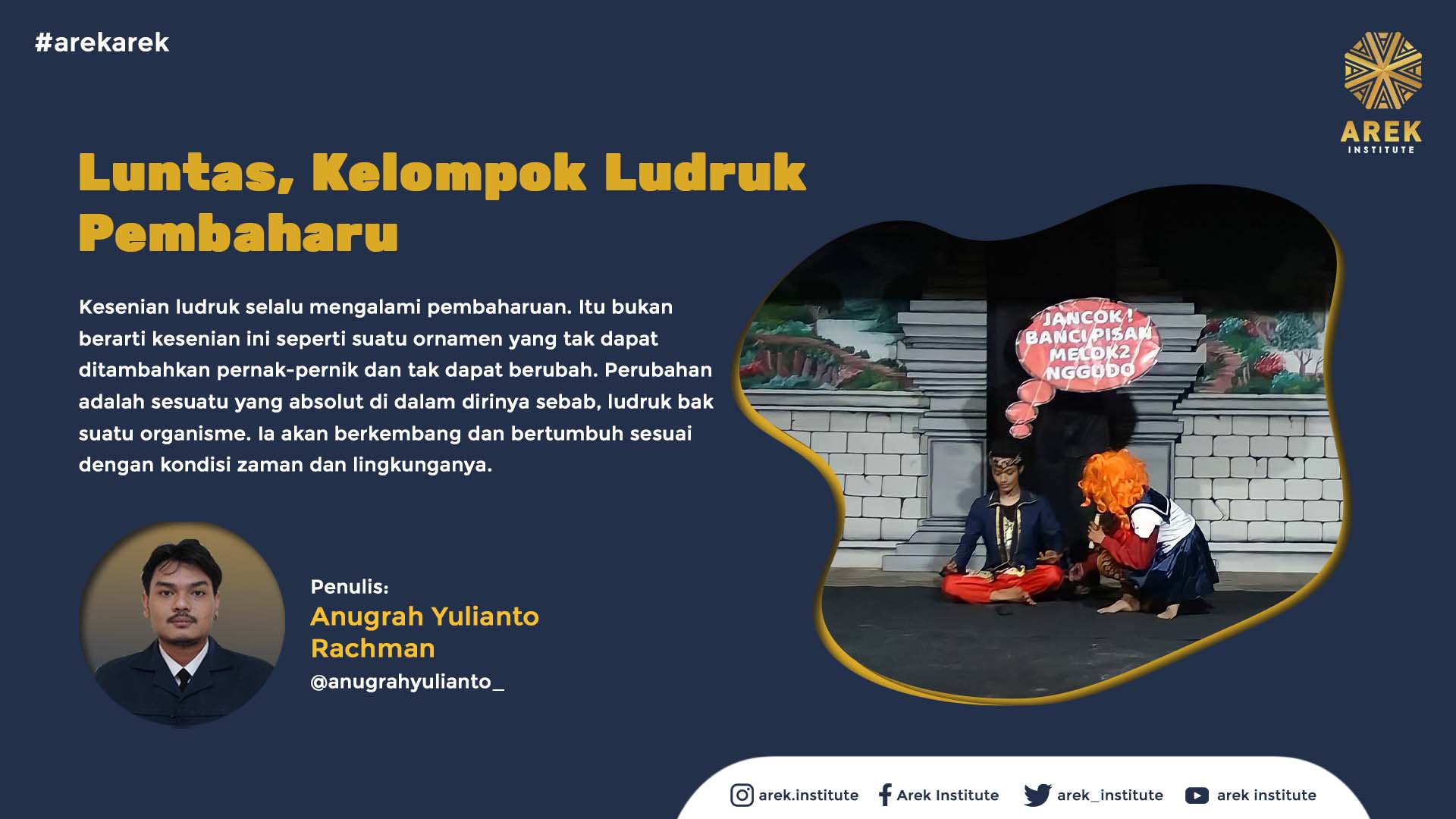
Arboyo: Ludruk Garuda Dancing

The art of Ludruk is not only a means of entertainment but also plays a more vital role in educating society. This can be achieved through the art world, which appears very enjoyable and entertaining. One such effort has been made by the Ludruk Arboyo group in Surabaya. They introduce the value of nationalism through the dance they developed, namely the Garuda Dance.
This dance was created because the awareness of nationalism is considered to be in decline, as demonstrated by actual facts that depict counterproductive behavioral patterns with a lack of empathy towards one’s own nation. Several factors contribute to this situation, such as the globalisation trend that is increasingly encroaching on society.
Based on these issues, the Ludruk Arboyo group (Arek Suroboyo) developed the Garuda dance. The dance aims to disseminate the discourse of nationalism. It is an effort to ground Pancasila through art, and this is shown by the presence of this dance as one of the openers in every performance of this Ludruk group.
As the name suggests, this dance has movements resembling the figure of the Garuda bird, including wing-flapping movements, flying movements, and twisting movements. Each movement has its own meaning. For example, the wing-flapping movement symbolizes that the Indonesian people must uphold the good name of the nation and state.
In addition to being used as an opening dance, the Garuda dance also includes the reading of Pancasila after the dance is finished. The audience and all performers are invited to stand and chant Pancasila together. The atmosphere becomes very solemn and profound with this sequence of events. It aims to invite, notably, the young audience to further ground Pancasila in art. This is because the Ludruk group sees that many young people today do not interpret Pancasila as the foundation of the state and its philosophy.
In the reading of Pancasila, the Ludruk Arboyo group requires all visitors or spectators to follow the Reader. This is part of the discourse dissemination carried out by the Ludruk Arboyo group. And it serves as the transmission of values to the audience that Pancasila must remain in the minds of the people.
Through this dance, Arboyo wants to show that Pancasila is not always understood rigidly. It is no longer studied textually as taught in schools or universities. However, Pancasila can also spread its discourse through art, which is close to society. Thus, society can get to know and reflect on Pancasila through a more enjoyable medium than the world of education alone.
This dance not only has a dissemination function but also simultaneously marks the character of the Ludruk Arboyo group—as one of the Pakem Ludruk groups. Because the owner of this dance is only this Ludruk group, and there is no other Ludruk group in Surabaya that has this dance. This dance is an educational tool created by the Ludruk Arboyo group so that society always remembers the identity of its nation, namely the foundation of the Indonesian state.
The Garuda dance was created by the wife of the late Cak Lupus, namely Nonik. The woman, commonly called Bunda Nonik, has replaced the role of the late Cak Lupus as the leader of Arboyo. Since then, Nonik has brought a renewal to her Ludruk group by adding the Garuda Dance at the beginning of the performance.
In an interview, Nonik—as the leader of Arboyo—said that there was a background to the creation of the Garuda Dance. It was caused by her concern over the erosion of the national identity among the wider community, especially Arek Suroboyo. This can be seen from the many young people, parents, and even state officials who do not memorize Pancasila. Therefore, she created this dance along with the reading of Pancasila to re-narrate Pancasila in the public space.
Nonik also received support from Lupus—as the chairman of this Ludruk group before his death. He gave support in the form of encouragement to Bunda Nonik to immediately develop the Garuda Dance, which was then followed by the reading of the Pancasila text. The reading is recited by the dancer at the end of the performance, which is then followed by all the audience.
Historically, this dance began to be composed since October 10, 2021, and the Garuda Dance was first publicly performed on November 23, 2021, at the Surabaya Cultural Hall. At that time, Arboyo was invited by the Surabaya City Government in an annual agenda, namely the Surabaya Art and Culture Festival 2021. In that performance, Arboyo presented the Sawunggaling play.
In this distinctive dance of the Arboyo Ludruk group, Nonik mandates that the members who join must learn. This means that members who are part of this Ludruk group are obligated to practice the Garuda dance. Nonik does this because she wants the narrative of love for the nation to be directed not only at the audience but to also start from within the members of Arboyo themselves.
Structurally, after the Garuda dance and the reading of Pancasila are finished, this Ludruk group continues with the traditional elements they have long implemented. These elements include kidungan (Javanese sung poetry), dagelan (comedy) combined with kidungan, and plays interspersed with kidungan. Thus, they always incorporate kidungan in every segment of their performance. Then, they also present a song owned by this Ludruk group, performed by several children of the Arboyo Ludruk Training members.
The addition of both the Garuda Dance and the Arboyo-owned song serves as an educational tool to ensure that society remembers its national identity. This Ludruk group demonstrates that mainstreaming the discourse of nationalism can be done not only in rigid forms such as educational institutions but also through the arts, like Ludruk art.
Therefore, the Arboyo Ludruk group uses Ludruk art as an educational medium for both the society and the internal members of this group. This is shown by their efforts to introduce Pancasila through this dance and teach it to all members of this Ludruk group. As a result, society can reflect more on Pancasila, both philosophically and ideologically.




